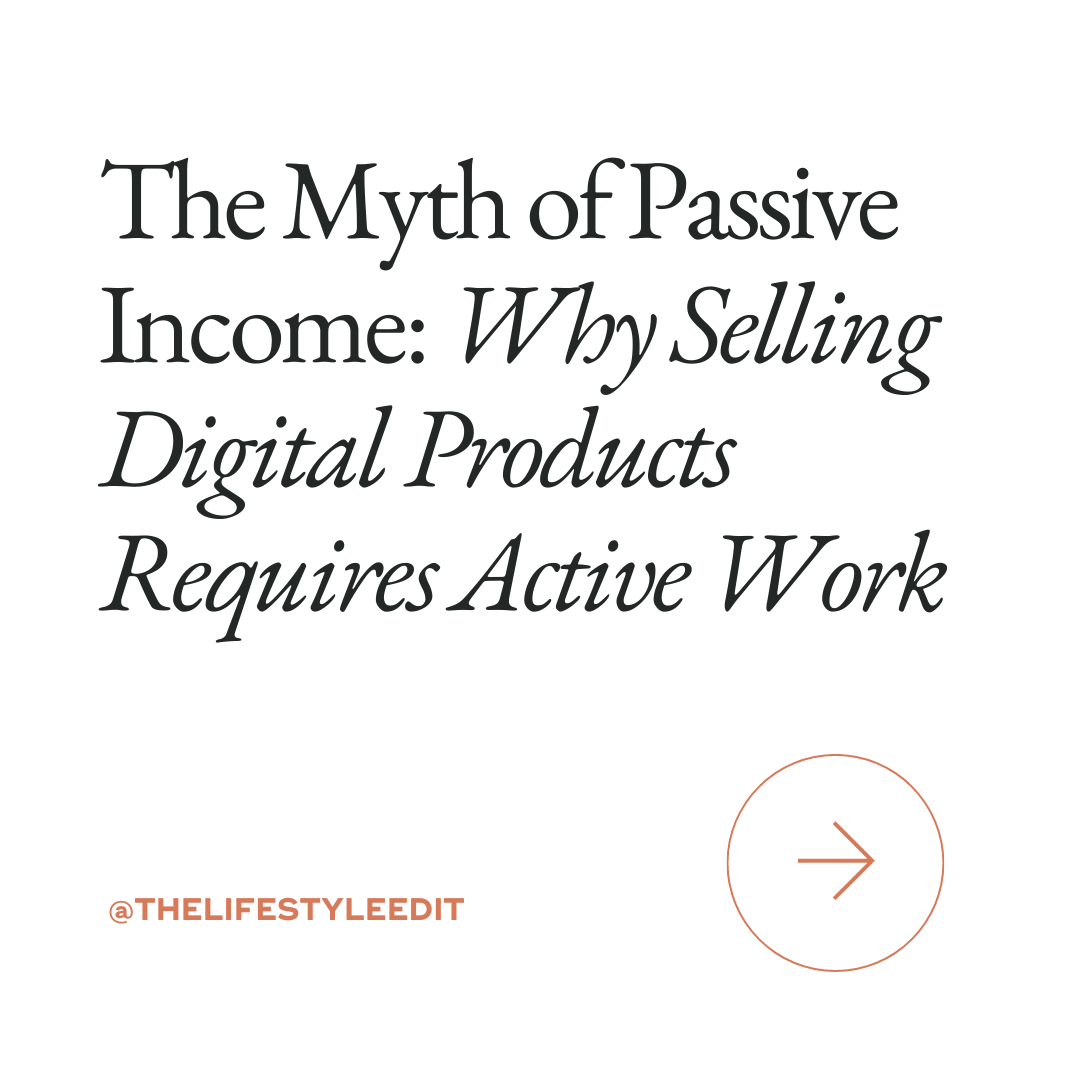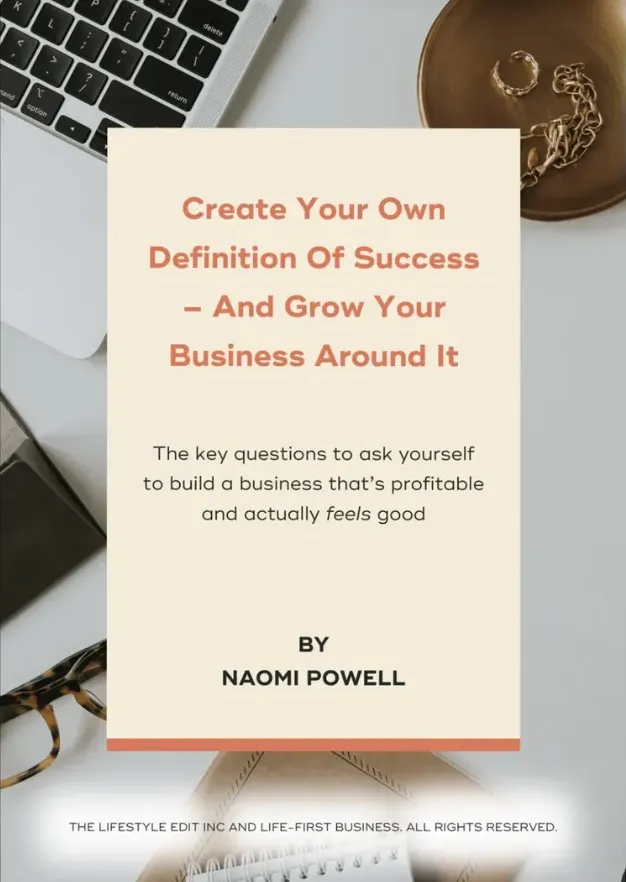Learn why passive income isn’t as “passive” as it seems and what it really takes to succeed with digital products.
The term “passive income” is often thrown around as the ultimate goal for entrepreneurs, especially in the digital product space.
The idea of creating something once and getting paid for it over and over again without any further effort is incredibly appealing.
However, the reality is that selling digital products requires a lot more active work than many people realize.
In this post, I’ll break down the common misconceptions about passive income and share why building and selling digital products requires ongoing attention and optimization if you want to achieve sustainable success.
The Fantasy of “Set It and Forget It”
When people talk about passive income, they’re usually imagining a scenario where they create a product once, set up a sales funnel, and then watch the money roll in while they’re offline on a beach somewhere. While that may be the dream, the reality is much more involved.
1. The Work Doesn’t Stop After Creation
Many people assume that once a digital product is built, the hardest part is over. But in reality, the creation phase is just the beginning.
From building the curriculum to setting up the platform, there’s an ongoing need to update, tweak, and improve your product to stay relevant and valuable.
Additionally, you’ll likely need to keep refining your messaging, sales pages, and email sequences based on real-time data and feedback from your audience.
2. Marketing and Traffic Generation Are Ongoing Processes
The myth of passive income assumes that customers will magically find your product without any effort on your part. But in reality, traffic doesn’t come for free.
Whether you’re using organic marketing or paid advertising, consistent visibility is necessary to keep your sales pipeline full.
Building awareness for your product and driving new leads into your funnel is an ongoing process. You can’t simply stop marketing once your product is created and expect sales to keep coming in. If you ramp down your marketing, your sales will drop off too.
The Active Work Behind “Passive” Income
While digital products can eventually create a more hands-off revenue stream compared to one-on-one services, there is still plenty of active work that needs to happen to keep the income flowing. Here are some of the key areas where active work is required:
1. Traffic Generation and List Building
As I teach inside Life-First Business, you need a steady flow of traffic to keep your digital product funnel healthy. This means continuously growing your email list, driving traffic through organic or paid channels, and expanding your reach to new audiences.
Consistent list-building efforts are crucial because even with a great product, your existing audience will eventually reach saturation. You need to keep getting in front of new people who haven’t yet been exposed to your offer.
2. Funnel Optimization
Even if you’ve built a great funnel, it’s unlikely to perform perfectly from day one. You’ll need to constantly review your conversion rates, track where people are dropping off, and make adjustments to improve performance over time.
This includes optimizing your landing pages, email sequences, and sales pages to ensure that they are as persuasive and effective as possible.
3. Customer Support and Engagement
Once people purchase your digital product, the work isn’t over. Customer support is often required to answer questions, resolve technical issues, or offer guidance on how to use the product.
This ensures that your customers have a positive experience and are more likely to give you testimonials or recommend your product to others.
Why Passive Income Isn’t Truly Passive
The reality is that digital products can create a reliable and scalable income stream, but they are far from “passive.” Here are a few reasons why passive income doesn’t exist in the way it’s often marketed:
1. You’re Constantly Managing Data
The moment you set up a funnel and start selling digital products, you need to track metrics like conversion rates, open rates, and customer behavior.
Understanding where people are falling off in the funnel and what messaging resonates best requires constant analysis and data-driven decision-making.
2. Scaling Requires Active Involvement
To scale a digital product, you need to focus on refining your offer and messaging, optimizing your marketing, and continuing to build your audience.
This requires active work, including copywriting, testing different sales events, and evaluating your content for improvements.
3. Paid Ads Need Ongoing Management
If you’re using paid ads to drive traffic to your digital product, it’s important to understand that ads need ongoing management.
Audiences shift, ad fatigue sets in, and you may need to test new creatives, adjust targeting, or change strategies to keep your cost per lead manageable and your funnel converting well.
The Importance of Building a Sustainable Business Model
Many entrepreneurs dive into digital products with the expectation that they’ll quickly achieve financial freedom. But selling digital products isn’t a get-rich-quick strategy—it’s a long-term game that requires a solid foundation.
This is why I teach my clients inside Life-First Business to focus on building a high-ticket offer first. This creates recurring income that covers your expenses and provides the breathing room to invest in creating and scaling digital products without feeling the pressure of immediate success.
By focusing on building a sustainable business model that includes digital products, high-ticket offers, and back-end memberships, you can create a more balanced business that supports your financial and lifestyle goals.
How to Create a Balance Between Active and Passive Income
If you’re serious about generating revenue through digital products, it’s important to strike a balance between the active and passive aspects of your business. Here’s how to approach it:
1. Start With a High-Ticket Offer
As mentioned earlier, I recommend starting with a high-ticket offer to secure recurring income that doesn’t rely on volume. This gives you the financial stability to build a digital product without compromising your income or burning out.
2. Create a Scalable Product
When building your digital product, focus on creating something scalable—something that doesn’t require constant updates or live delivery. The goal is to create a product that delivers value on autopilot, with minimal ongoing involvement on your part.
3. Automate Where Possible
Use automation tools to manage customer support, sales, and email follow-ups.
This will help reduce the amount of time and energy you need to invest in maintaining your product, allowing you to focus on scaling.
4. Continue Investing in Marketing
Even with automation in place, you’ll need to continue investing time and resources into marketing.
Whether you’re using organic traffic, paid ads, or both, keep driving new leads into your funnel so that your product doesn’t rely on the same small pool of customers.
Passive Income Is a Myth, But Scalability Is Real
The truth is, passive income is more of a myth than a reality. However, scalability is real, and digital products can help you create a more sustainable, leveraged business.
By understanding that digital products require ongoing effort—especially in the areas of marketing, optimization, and customer support—you can set realistic expectations and build a business that aligns with your lifestyle and goals.
If you’re ready to learn how to create a scalable digital product that works with your life-first business model, join us inside Life-First Business, where we teach the exact strategies you need to build sustainable, long-term growth.








